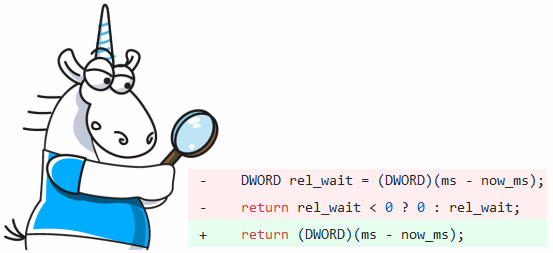Designing a circuit that calculates integer cube root

Designing a circuit that calculates integer cube root.
In this article I will make a circuit on Verilog HDL on FPGA which will calculate cube root from integer value.

Designing a circuit that calculates integer cube root.
In this article I will make a circuit on Verilog HDL on FPGA which will calculate cube root from integer value.

"Come, let us make bricks, and burn them thoroughly."
– legendary builders
You may have noticed by 2020 that data is eating the world. And whenever any reasonable amount of data needs processing, a complicated multi-stage data processing pipeline will be involved.
At Bumble — the parent company operating Badoo and Bumble apps — we apply hundreds of data transforming steps while processing our data sources: a high volume of user-generated events, production databases and external systems. This all adds up to quite a complex system! And just as with any other engineering system, unless carefully maintained, pipelines tend to turn into a house of cards — failing daily, requiring manual data fixes and constant monitoring.
For this reason, I want to share certain good engineering practises with you, ones that make it possible to build scalable data processing pipelines from composable steps. While some engineers understand such rules intuitively, I had to learn them by doing, making mistakes, fixing, sweating and fixing things again…
So behold! I bring you my favourite Rules for Data Processing Pipeline Builders.
 cGit-UI — is a web interface for Git repositories. cGit-UI is based on CGI script written in С.
cGit-UI — is a web interface for Git repositories. cGit-UI is based on CGI script written in С.
This article covers installing and configuring cGit-UI to work using Nginx + uWsgi. Setting up server components is quite simple and practically does not differ from setting up cGit.
cGit-UI supports Markdown files that are processed on the server side using the md4c library, which has proven itself in the KDE Plasma project. cGit-UI provides the ability to add site verification codes and scripts from systems such as Google Analytics and Yandex.Metrika for trafic analysis. Users who wonder to receive donations for his projects can create and import custom donation modal dialogs.
Instead of looking at screenshots, it is better to look at the working site to decide on installing cGit-UI on your own server.

The FT4232H is USB 2.0 High speed to UART IC converter. The FT4232H has four UART ports and one USB port.
By connecting EEPROM memory to this chip, you can set specific operating modes or change the manufacturer's data.
Let's look at the example and configure FT4232H directly on a system running GNU/Linux. We will do this using the ftdi_eeprom.

Let's consider the following problem: we have an array of integers and we need to find out the length of the smallest subarray the sum of which is no less than the target number. If we don't have such a subarray we shall return -1.
We can start with a naive approach and consider every possible subarray in the input:

Every time when the essential question arises, whether to upgrade the cards in the server room or not, I look through similar articles and watch such videos.
Channel with the aforementioned video is very underestimated, but the author does not deal with ML. In general, when analyzing comparisons of accelerators for ML, several things usually catch your eye:
The answer to the question "which card is better?" is not rocket science: Cards of the 20* series didn't get much popularity, while the 1080 Ti from Avito (Russian craigslist) still are very attractive (and, oddly enough, don't get cheaper, probably for this reason).
All this is fine and dandy and the standard benchmarks are unlikely to lie too much, but recently I learned about the existence of Multi-Instance-GPU technology for A100 video cards and native support for TF32 for Ampere devices and I got the idea to share my experience of the real testing cards on the Ampere architecture (3090 and A100). In this short note, I will try to answer the questions:





 cSvn — is a web interface for Subversion repositories. cSvn is based on CGI script written in С.
cSvn — is a web interface for Subversion repositories. cSvn is based on CGI script written in С.
This article covers installing and configuring cSvn to work using Nginx + uWsgi. Setting up server components is quite simple and practically does not differ from setting up cGit.
cSvn supports Markdown files that are processed on the server side using the md4c library, which has proven itself in the KDE Plasma project. cSvn provides the ability to add site verification codes and scripts from systems such as Google Analytics and Yandex.Metrika for trafic analysis. Users who wonder to receive donations for his projects can create and import custom donation modal dialogs.
Instead of looking at screenshots, it is better to look at the working site to decide on installing cSvn on your own server.
It should be noted that you can browse not only your own repositories, but also configure viewing of third-party resources via HTTPS and SVN protocols.

Privet, comrads!
In this article i’ll show how easy it is to setup Spring Java app with Kafka message brocker. We will use docker containers for kafka zookeeper/brocker apps and configure plaintext authorization for access from both local and external net.
Link to final project on github can be picked up at the end of the article.

There probably is no way one who stores some crucial data (and well, in particular, using SQL databases) can possibly dodge from thoughts of building some kind of safe cluster, distant guardian to protect consistency and availability at all times. Even if the main server with your precious database gets knocked out deadly - the show must go on, right? This basically means the database must still be available and data be up-to-date with the one on the failed server.
As you might have noticed, there are dozens of ways to go and Patroni is just one of them. There is plenty of articles providing a more or less detailed comparison of the options available, so I assume I'm free to skip the part of luring you into Patroni's side. Let's start off from the point where among others you are already leaning towards Patroni and are willing to try that out in a more or less real-case setup.
I am not a DevOps engineer originally so when the need for the high-availability cluster arose and I went on I would catch every single bump on the road. Hope this tutorial will help you out to get the job done with ease! If you don't want any more explanations, jump right in. Otherwise, you might want to read some more notes on the setup I went on with.

Introduction and Context
So you’ve just finished developing the next mobile gaming smash hit. You’ve already planned to launch your game worldwide and win the hearts of gamers everywhere. But what you haven’t done yet is think about how you’re going to make any money from your success and hard work. Of course, you’ve imagined becoming an instant millionaire, but you just don’t know how to get there.
Fear not, intrepid developer! Instead of just rehashing the tired headlines and beating the same old drum, we’ve tailored our Ad Monetization write-up for developers who are gearing up to publish their game or app in China. We’ve scoured the internet, grabbed insight from ad giants like Google, Smartyads, and PocketGamer.biz and combined it with our own hands-on knowledge of what works in China—knowledge that we have gained from the past 5 years in the industry.
We need to briefly explore how monetization functions as a utility within the context of game design. This is especially true when examining how developers in China have made meaningful design decisions that have both shaped and been shaped by user habits. Unpacking the utility of Chinese game monetization will help developers understand why Ads Monetization or Hybrid Monetization strategies have become so popular, especially in China.
Moving from monetization design, we’ll examine some of the best practices regarding Ads Monetization. Finally, we’ll turn to specific case studies in the Chinese market that show how powerful Ads Monetization, specifically Rewarded Videos, can be in a well-balanced monetization strategy.
Designing Monetization as a Utility

Entity class from a symbolic algebra library: